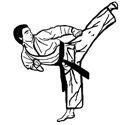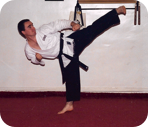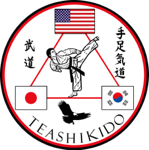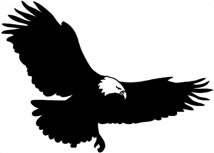
TEASHIKIDO
Translated
“The Way Of Hand And Foot Energy”
Teashikido is an eclectic style made of:
Chang-mu-kwan do (Korean),
Shotokan Karate, Aikido (Japanese) &
Isshin-Ryu (Okinawan)
Hand
Foot
Energy
Way (The Way)








Our Name:
Our martial arts style name was developed by Paul Langford and Atsutomo Naito of Japan
and is an amalgamation of four Japanese kanji characters that translate: “the way of hand foot energy.” These kanji were provided to Soke Langford by Shiho Kamei of Gifu, Japan. This designation highlights our conviction that hand technique and foot movement work together and in harmony with energy (ki) for self-defense and/or prompt and effective disarmament. Through training, hand technique compliments foot movement, which in turn should foster properly balanced ki. Such is the focus up until the rank of Black Belt(Shodan). Thereafter, the process reverses as properly balanced ki is applied to refine foot movement, which by default helps to perfect the application of hand technique.
Our Background:
Teashikido is an ECLECTIC full-range martial arts style developed By Soke Langford in the United States in 2005 and is a descent from Chang-moo-kwan-do, a Korean art founded by In Yoon Byung who taught at the Seoul YMCA in the 1940’s. Perhaps Chang-moo-kawn-do’s greatest contribution to Teashikido was its consciousness of value in various martial arts styles as opposed to the blind devotion toward singular tradition that was typical in Byung’s day. An eclectic spirit pervaded In Yoon Byung’s training and teaching from early on and is demonstrated best while he was training in karate. He was able to demoralize some karate students that were bullying some of the other students by using the Chinese Chuan-Fa he had learned as a child in Manchuria. He skillfully deflected and evaded the Japanese karate student’s strikes and kicks to the point that they gave up and went back to tell their teacher what had transpired. The teacher invited Byung to explain the non-karate martial art he used against his students, and the two decided to exchange knowledge. Byung later brought his Chuan-Fa and karate training to Korea, adding some indigenous combat systems, and formulated Chang-moo-kwan-do. This spirit of eclecticism has passed on, and such is a core value of Teashikido. The true art of Teashikido can be easily identified by the image of Soke Langford, which is used as an official seal on all patches and certificates.
Teashikido includes: a balance of power and fluidity, strong emphasis on kata, attention to body mechanics and of basic technique, targeting precision, and the use of practical weaponry. All of these aspects are clearly identifiable in Teashikido kata and ippon kumite.
Teashikido is also heavily influenced by the traditional arts of Aikido (Japan), Isshinryu (Okinawa), and Shotokan Karate (Okinawa/Japan), all officially propagated in the early twentieth century.
Aikido’s contributions include emphases on: redirection of force, displacement of balance, circular motion, grappling technique, and the application of ki. Such attributes are clearly identifiable in Teashikido ippon kumite, weapons defense, self-defense technique, and weapons kata.
Shotokan’s contributions include emphases on: the natural progression of strength and power toward balanced fluidity, strong basic techniques and stances, quick in-and-out linear motion, and kata structure/technique. Such attributes are clearly identifiable in Teashikido kata, ippon kumite, and self-defense technique.
Finally, Isshinryu’s contributions include emphases on: natural positioning, angular motion, the closing of distance, prompt and lethal disarmament, and short snapping technique. Such attributes are clearly identifiable in Teashikido kata, ippon kumite, and self-defense technique.
Our Mission:
The mission of Teashikido and its primary dojo of instruction, Core Martial Arts Academy, is to teach practical self-defense and acute martial arts skills from a Christian perspective in a family-friendly environment. We strive to offer balanced training in a full-range martial art, giving particular attention to realistic self-defense, kata, bunkai, grappling, kumite, flexibility, agility, endurance, moral virtue, and spiritual fortitude.
Our Instructors:
Our instructors comprise a Yudansha (i.e. black belt) Board that oversees all affairs pertaining to the art of Teashikido. The Yudansha Board embraces, advocates, and promotes high standards of leadership. Therefore, each individual instructor is regularly assessed in terms of martial arts ability, teaching proficiency, and moral character. With regard to the latter, all Teashikido instructors are expected to abide by a specific Yudansha Code of Ethics.


